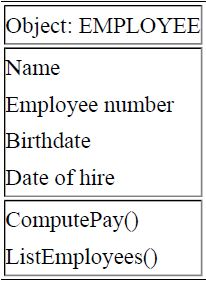A procedural programming language is designed to allow a programmer to define a specific starting point for the program and then execute sequentially. All early programming languages worked this way. As user interfaces became more interactive and graphical, it made sense for programming languages to evolve to allow the user to define the flow of the program. The object-oriented programming language is set up so that the programmer defines “objects” that can take certain actions based on input from the user. In other words, a procedural program focuses on the sequence of activities to be performed; an object-oriented program focuses on the different items being manipulated.
For example, in a human-resources system, an “EMPLOYEE” object would be needed. If the program needed to retrieve or set data regarding an employee, it would first create an employee object in the program and then set or retrieve the values needed. Every object has properties, which are descriptive fields associated with the object. In the example below, an employee object has the properties “Name”, “Employee number”, “Birthdate” and “Date of hire”. An object also has “methods”, which can take actions related to the object. In the example, there are two methods. The first is “ComputePay()”, which will return the current amount owed the employee. The second is “ListEmployees()”, which will retrieve a list of employees who report to this employee.

- 瀏覽次數:1776






